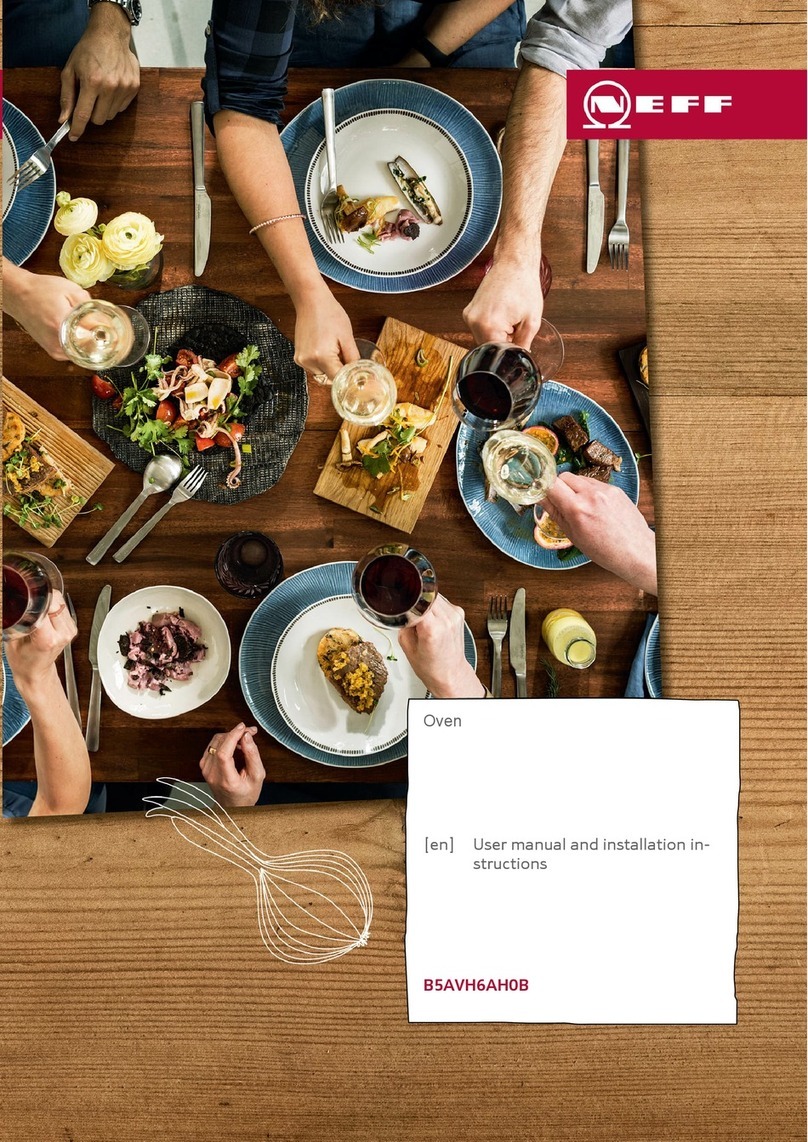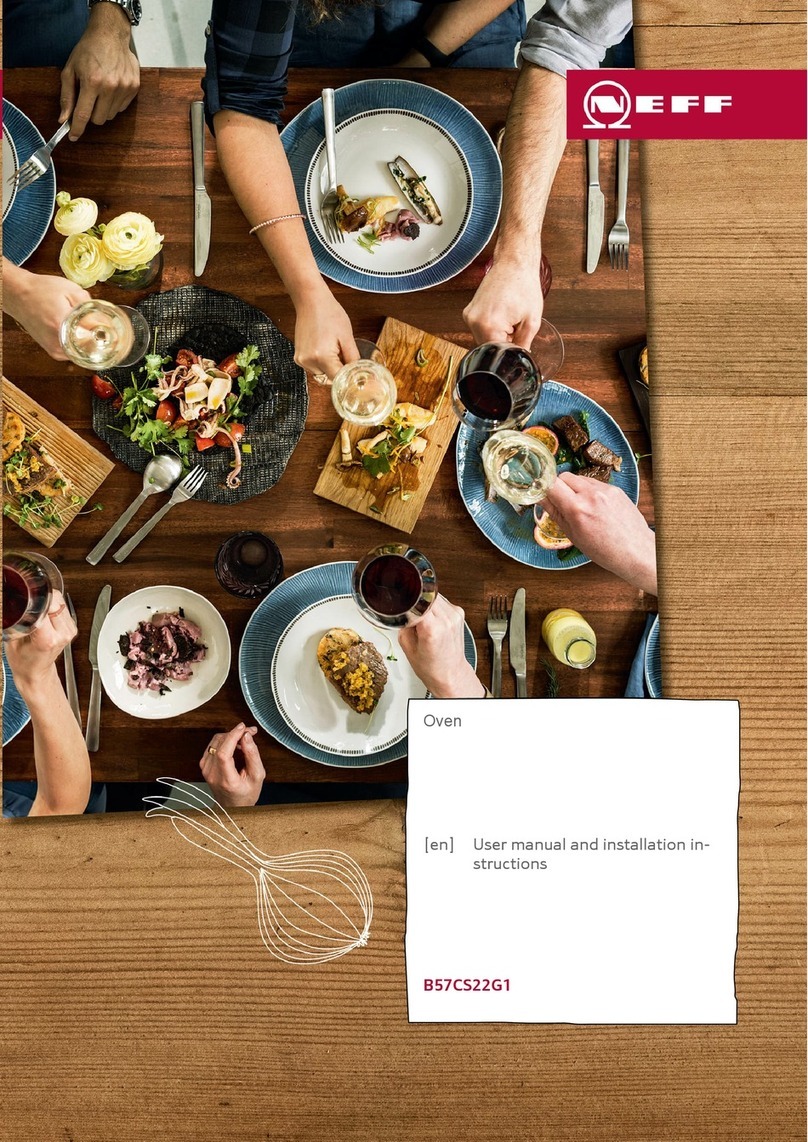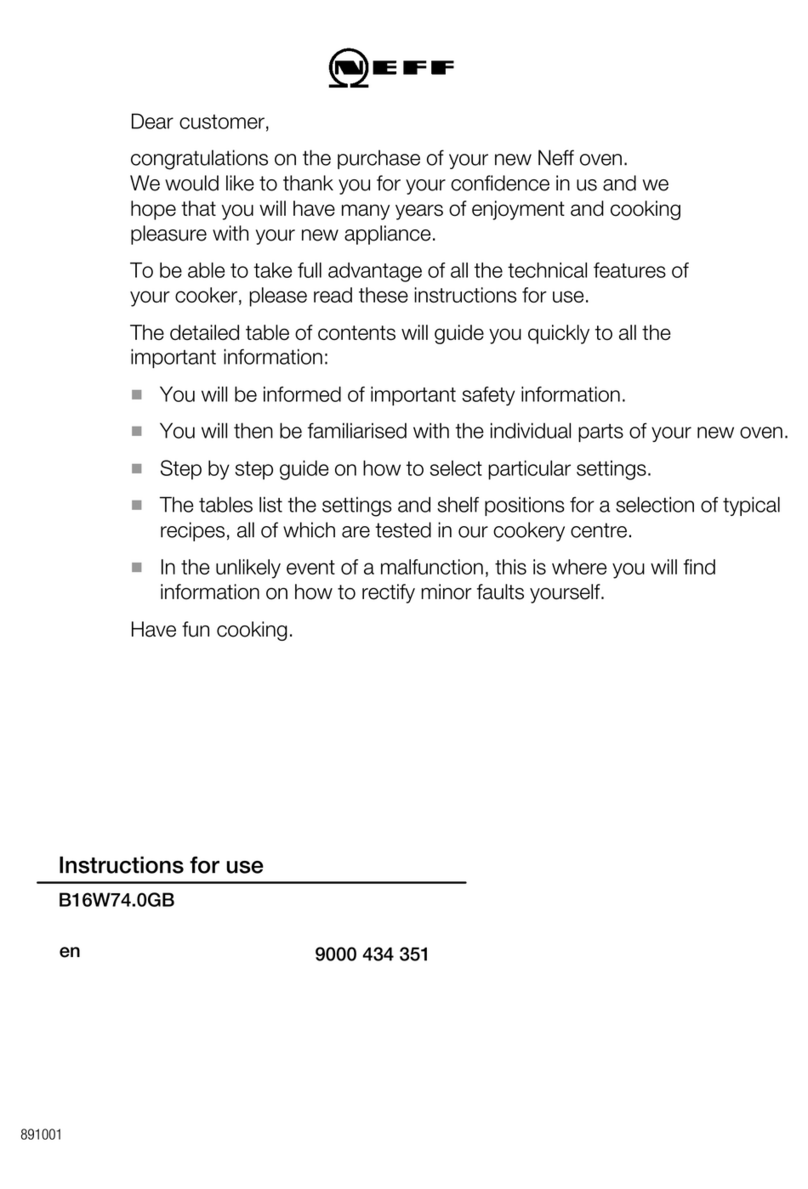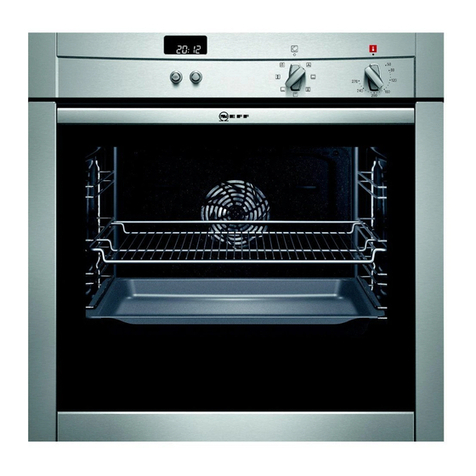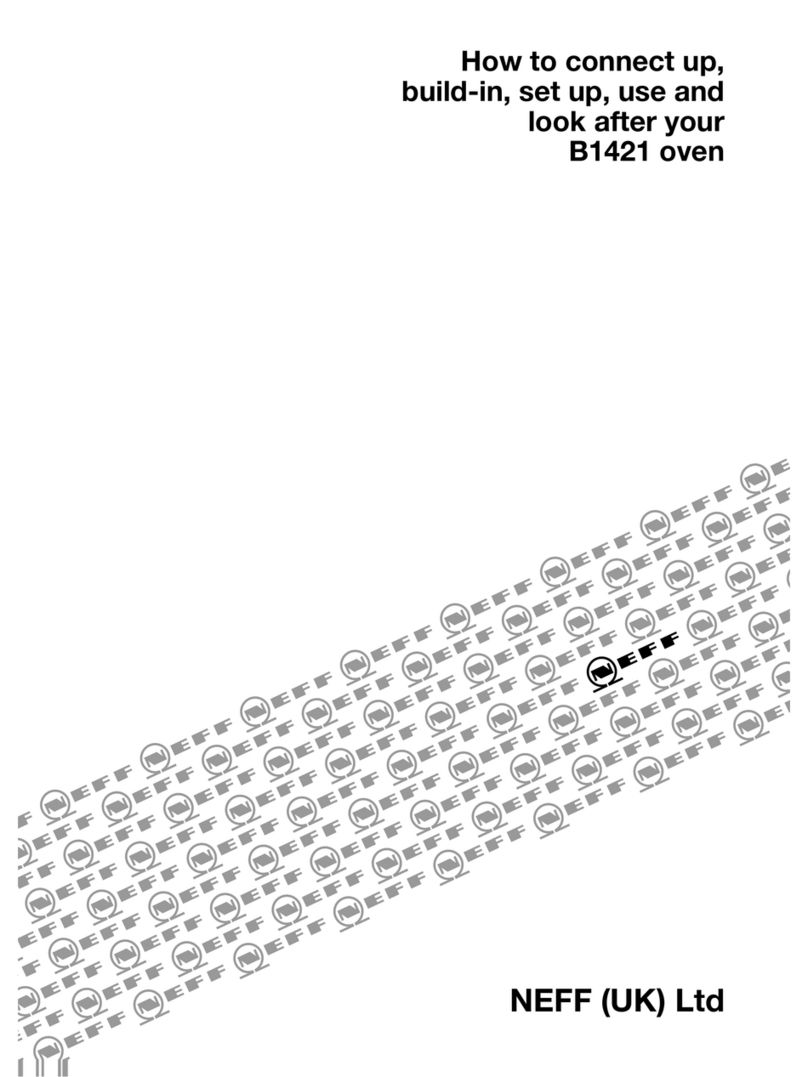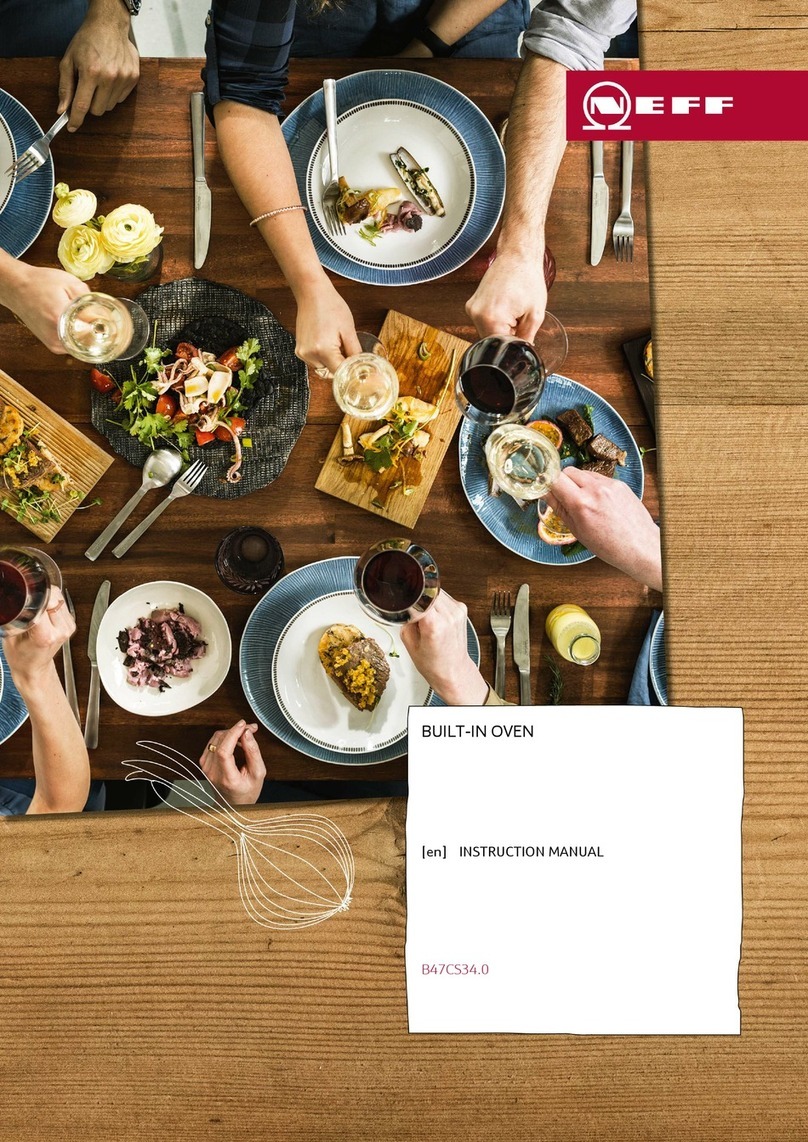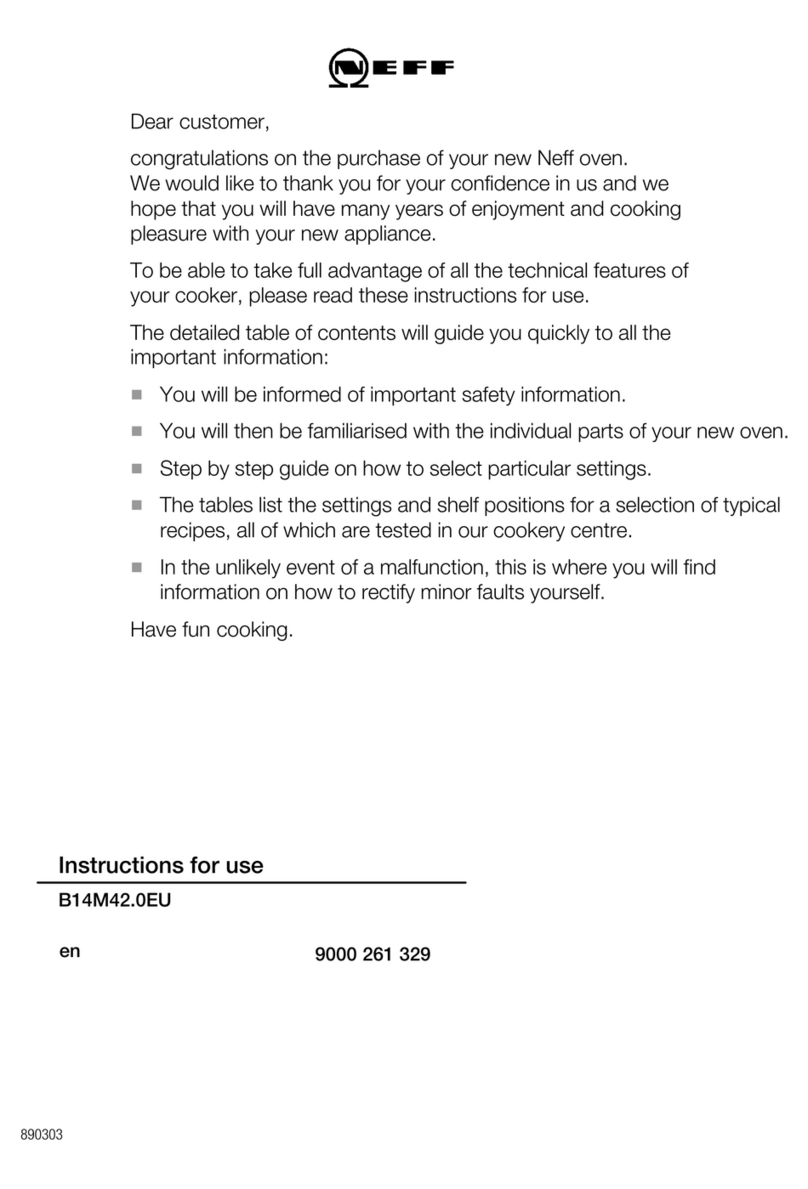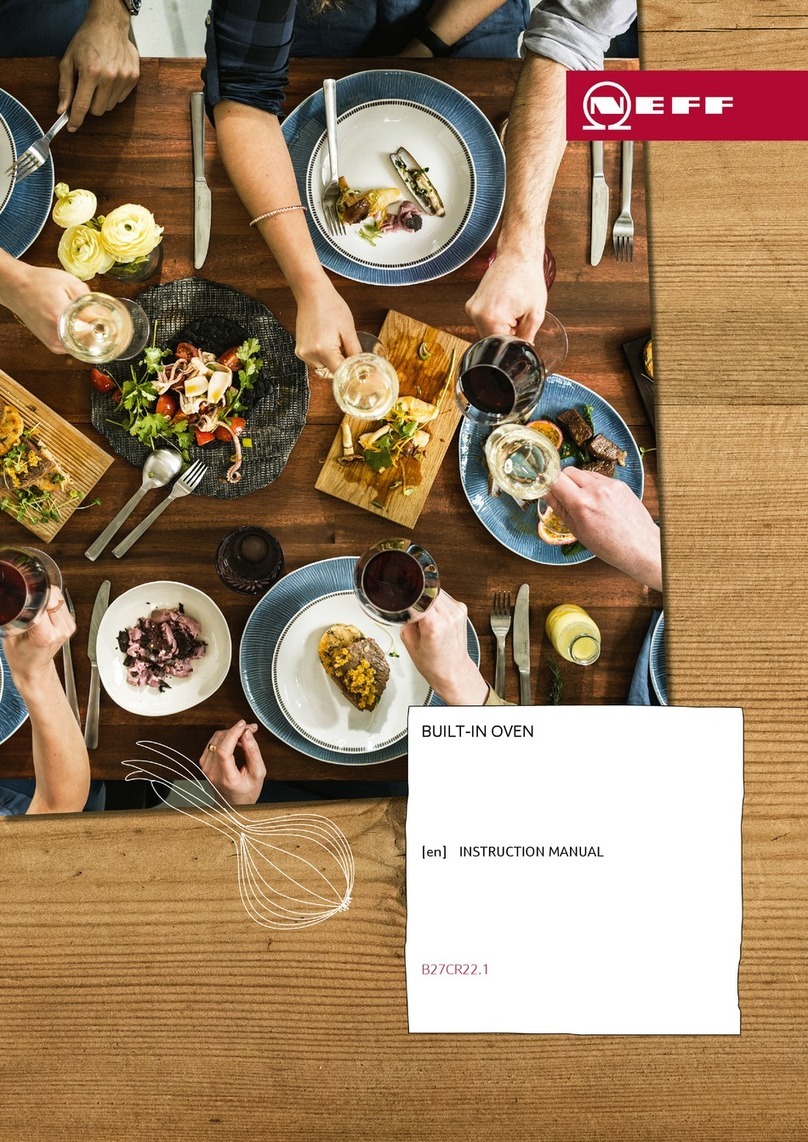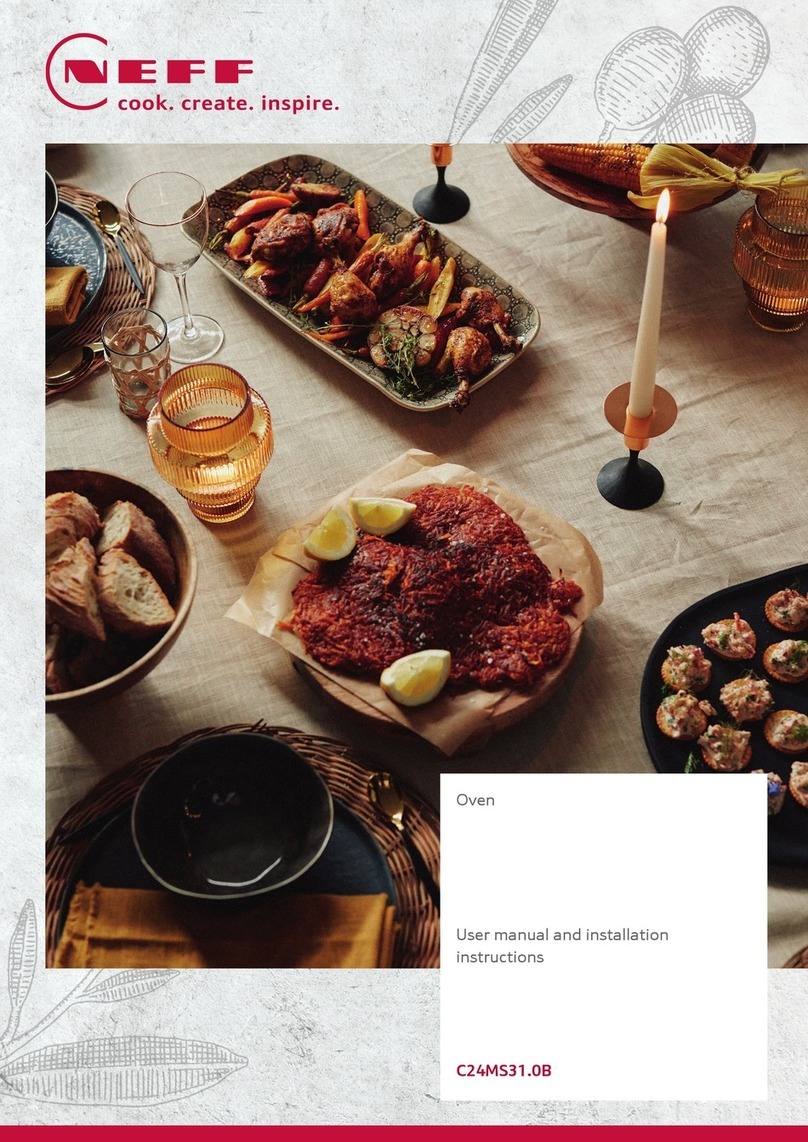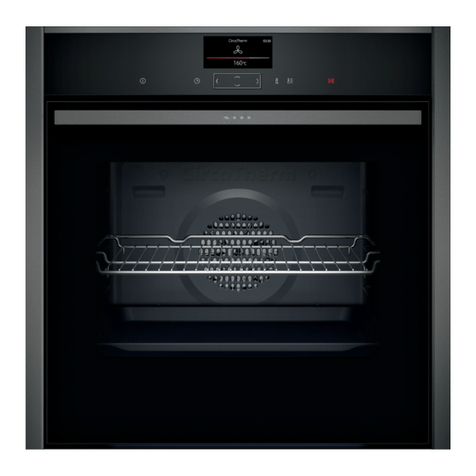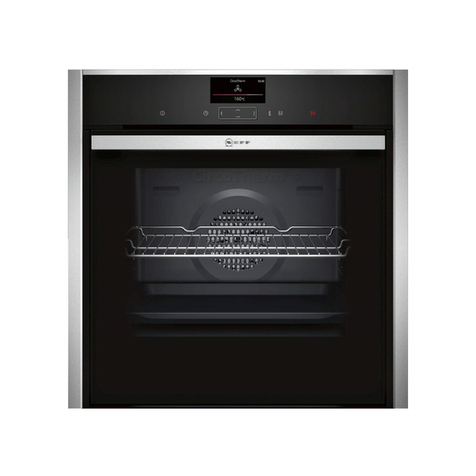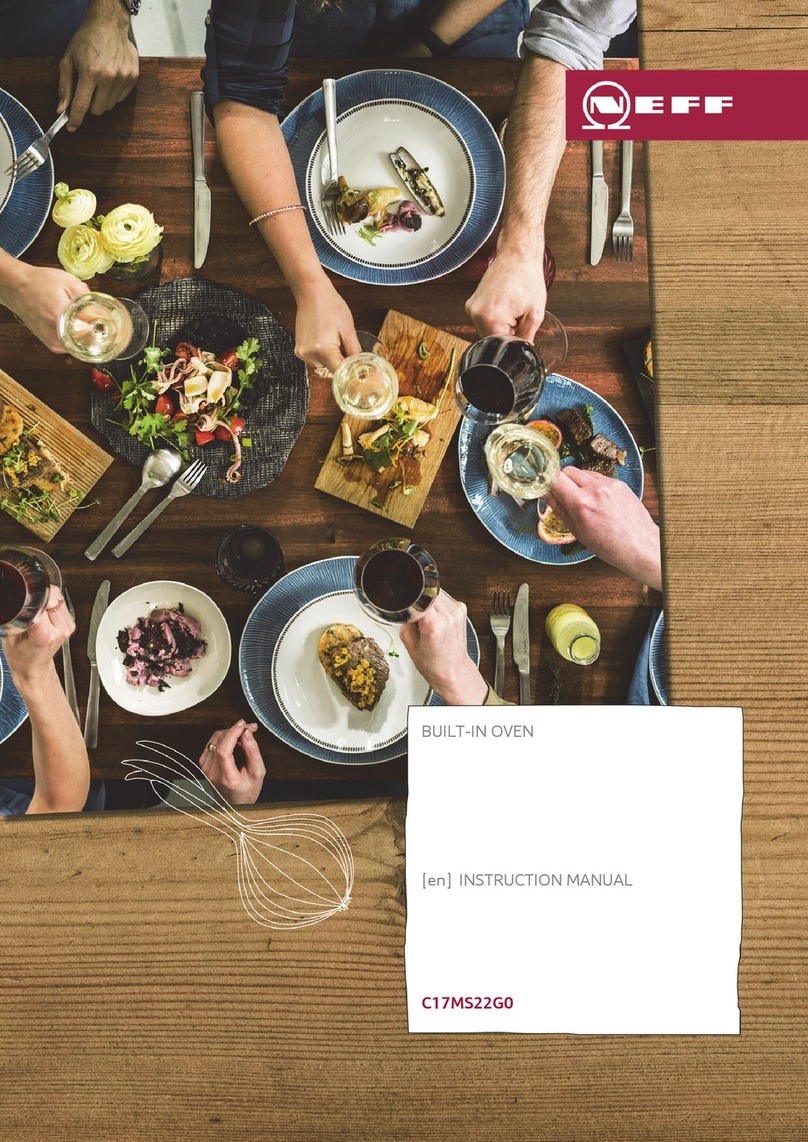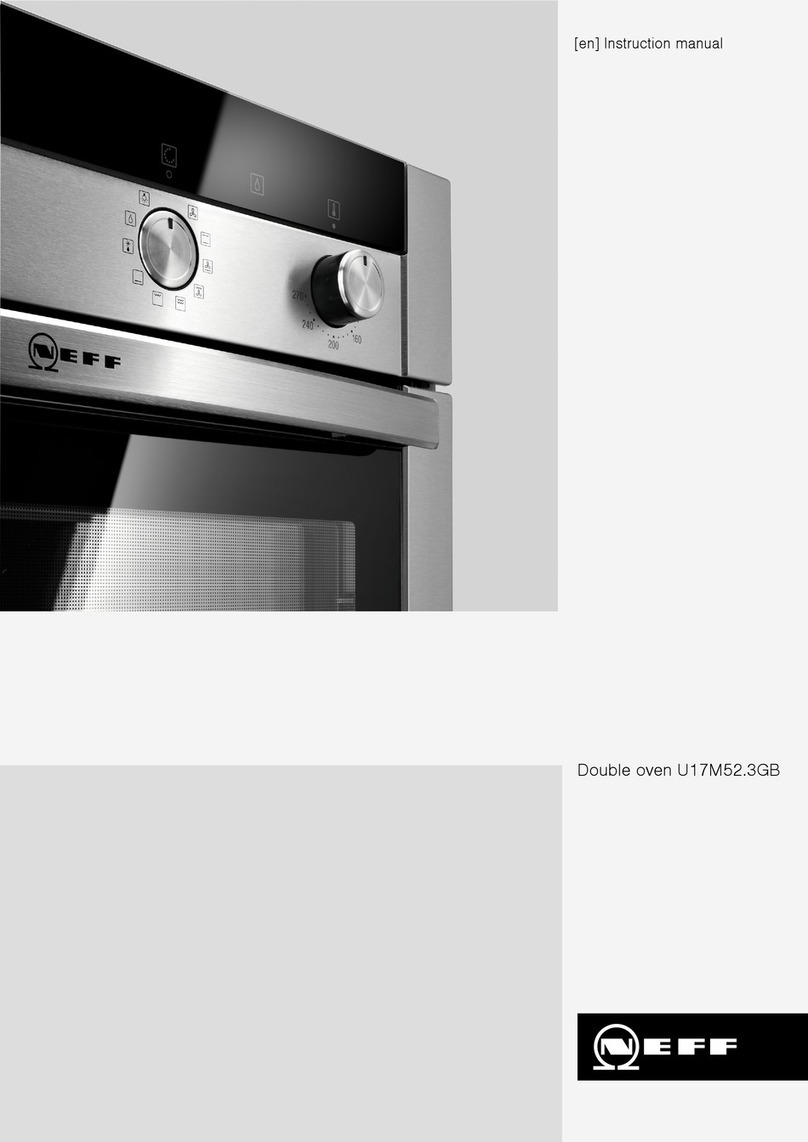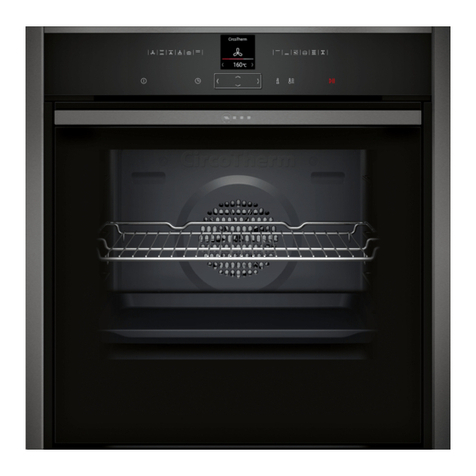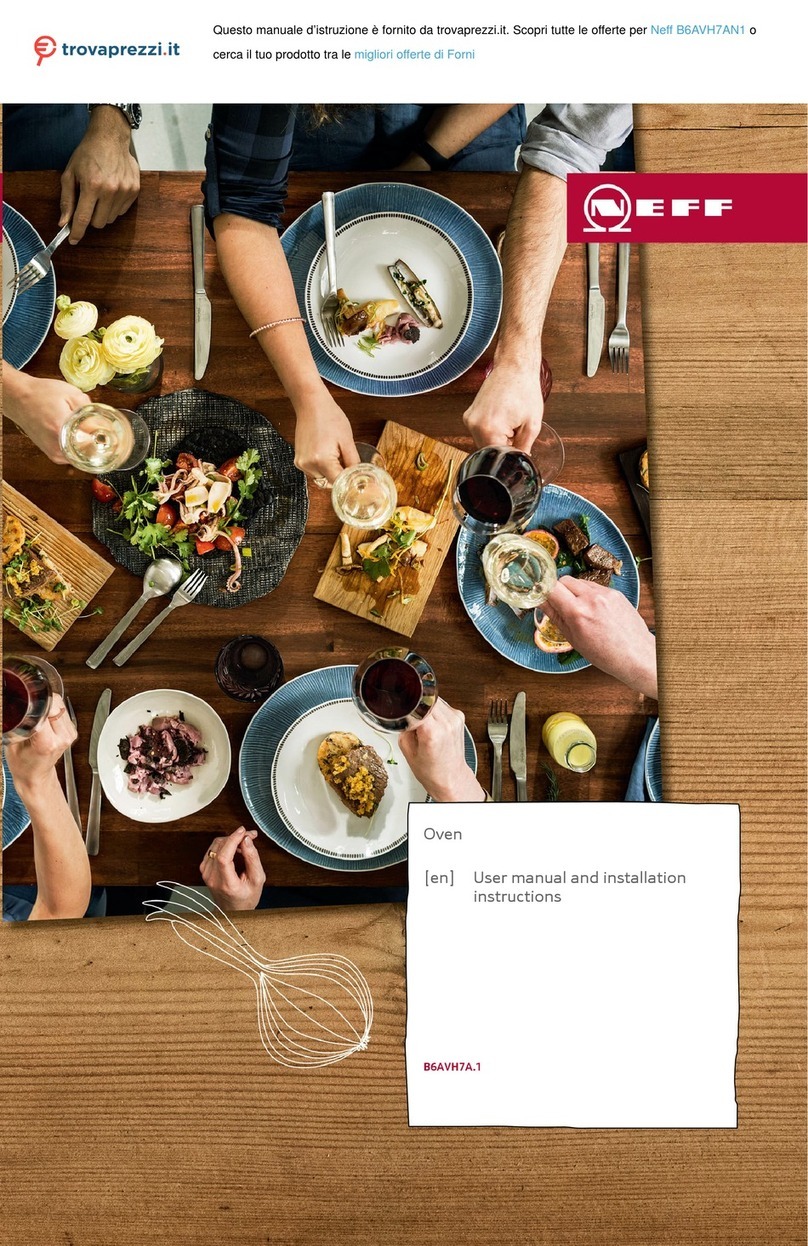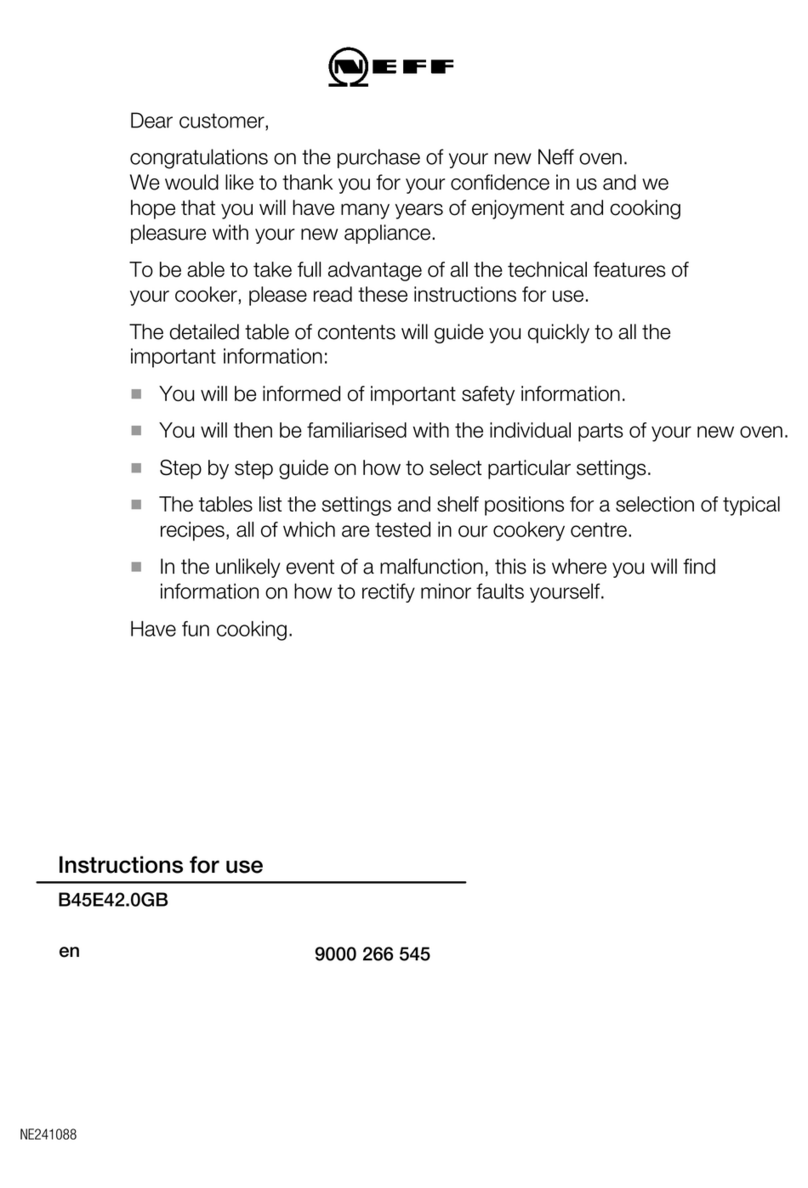
3
ÚTable of contents
Safety precautions..................................................................... 4
Before installation ...............................................................................4
Safety notes .........................................................................................4
Causes of damage .............................................................................4
Energy and environment tips ................................................... 5
Saving energy......................................................................................5
Environmentally-friendly disposal.....................................................5
Your new appliance ................................................................... 5
Control panel .......................................................................................5
Operating modes................................................................................6
Cooking compartment .......................................................................6
Shelf positions .....................................................................................6
Accessories .........................................................................................6
Before using the appliance for the first time........................... 7
Setting the clock .................................................................................7
Cleaning the appliance......................................................................7
Operating the appliance............................................................ 7
Switching on the appliance...............................................................7
Switching off the appliance...............................................................8
Changing the basic settings.............................................................8
Automatic safety cut-out ....................................................................8
Electronic clock ......................................................................... 8
Clock display .......................................................................................8
Timer .....................................................................................................9
Cooking time .......................................................................................9
End of operation .................................................................................9
Preset operation..................................................................................9
Setting the clock .............................................................................. 10
Rapid heat up................................................................................... 10
Checking, correcting or deleting settings ................................... 10
Childproof lock......................................................................... 10
Lock.................................................................................................... 10
Permanent lock ................................................................................ 10
Baking....................................................................................... 11
Baking on one level......................................................................... 11
Baking on two or more levels ....................................................... 11
Baking table...................................................................................... 11
Baking table for ready-made products........................................ 12
Tips and tricks .................................................................................. 12
Roasting and braising ............................................................. 13
Roasting............................................................................................. 13
Braising.............................................................................................. 13
Tables for roasting and braising................................................... 13
Tips and tricks .................................................................................. 15
Grilling ...................................................................................... 15
Circo-roasting ................................................................................... 15
Radiant grilling ................................................................................. 16
Grilling table...................................................................................... 16
Low-temperature cooking....................................................... 17
Using Low-temperature cooking................................................... 17
Table for Low-temperature cooking ............................................. 17
Tips and tricks .................................................................................. 18
Defrosting................................................................................. 18
Defrosting with CircoTherm® ........................................................ 18
Defrost................................................................................................ 18
Yoghurt ..................................................................................... 18
Pyrolytic cleaning .....................................................................19
Important notes ................................................................................ 19
Before cleaning ................................................................................ 19
Setting the cleaning level ............................................................... 19
After cleaning ................................................................................... 20
Care and cleaning.....................................................................20
Cleaning agents............................................................................... 20
Detaching and attaching the oven door...................................... 20
Removing the door cover .............................................................. 21
Removing and installing the door panels ................................... 21
Cleaning the hook-in racks............................................................ 22
Faults and repairs.....................................................................22
Malfunction table.............................................................................. 22
Replacing the bulb in the oven ceiling light ............................... 23
Glass cover....................................................................................... 23
After-sales service....................................................................24
E number and FD number ............................................................. 24
Test dishes ................................................................................24
Produktinfo
Additional information on products, accessories, replacement
parts and services can be found at www.neff-
international.com and in the online shop www.neff-
eshop.com

